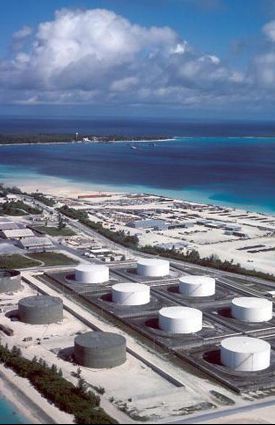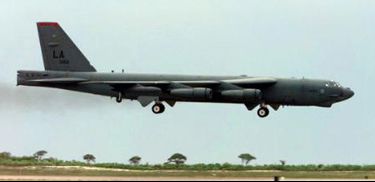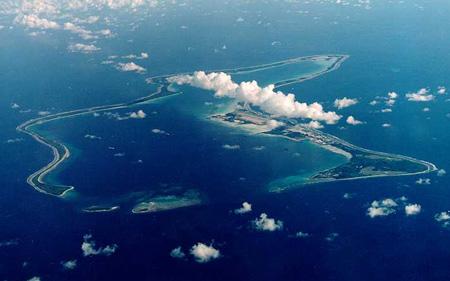Iran, with its usual rhetoric, continues to threaten the West, just a few days before the P5 + 1 meeting in Geneva, to try to find a definitive agreement on the Iranian nuclear program before the expiry of the extension. The United States, Great Britain, France, Germany, Russia and China, the 24 last November, froze the "Iranian situation", considering the impossibility of finding an agreement with Tehran in the short term. Just that stall in the negotiation has allowed Iran to escape the sanctions imposed by the West and to guarantee a production of about 70 missiles.
If the United States attacks - said Mojtaba Zonnour, a senior official of the Iranian revolutionary guards - we would strike back bases in Bahrain or the Diego Garcia in the Indian Ocean in retaliation.
 The Diego Garcia is one of the most important bases of the US Navy (with annexed structure managed by the CIA and MI6), an atoll off the southern tip of India, the largest of the archipelago of the Chagos islands. If the Tehran regime was really able to hit the base, this means that Iranian missiles have reached a range of at least three thousand miles. A coup for estimates held by Western intelligence services that have always talked about missiles (unreliable) and with a maximum range of 1000 / 1500 miles.
The Diego Garcia is one of the most important bases of the US Navy (with annexed structure managed by the CIA and MI6), an atoll off the southern tip of India, the largest of the archipelago of the Chagos islands. If the Tehran regime was really able to hit the base, this means that Iranian missiles have reached a range of at least three thousand miles. A coup for estimates held by Western intelligence services that have always talked about missiles (unreliable) and with a maximum range of 1000 / 1500 miles.
Zonnour's statements are clearly a response to US policy and to President Obama's latest speech on Iran's nuclear program. To respect the agreements - Obama said - we will use every available option.
Iran, we said. Tehran is not new to such claims, but it is the first time he mentions the Diego Garcia base for a potential missile attack.
The Diego Garcia is a powerful outpost, born to fight Soviet influence and to defend oil interests in the Middle East. American pilots call it the "aircraft carrier". Although its activities are covered by military secrecy, it is known that at the Diego Garcia are deployed F-15 and F-16 multi-role fighters, F-22 interceptors for air superiority and a strategic force formed by B-52 bombers, B- 1 and B-2. In the 2007 the Pentagon spent 32 million dollars to build a base for nuclear-powered attack submarines.
The missions against Iraq and Afghanistan started from the base. If a counter-offensive against Iran were unleashed, Diego Garcia would be at the forefront. As evidence of this, it would be appropriate to recall what was said by the Russian Air Force Major General, Alexander Mordovin, in an interview with Pravda in the 2011. In a hypothetical attack on Iran - said Mordovin - the United States, considering that most of the missiles are inside silos placed deep in the ground, they should use strategic aviation in attacks, with bombs capable of destroying large underground structures.
In the 2010, some explosions destroyed the immense underground complex of "Imam Alì," the Shahab-3B missile launch site, and the causes were never clarified even though there was talk of an unknown American elite body: the then top secret Seal Team Six.
 The Diego Garcia, according to Mordovin, would be equipped with heavy ammunition and not compatible with the type of missions carried out in Afghanistan. According to a thesis shared by the experts, Diego Garcia would be able to guarantee an attack against a country like Iran in a completely autonomous way, with the ability to destroy 10000 targets in a few hours without any type of supply. The base could trigger and perhaps win, a small war.
The Diego Garcia, according to Mordovin, would be equipped with heavy ammunition and not compatible with the type of missions carried out in Afghanistan. According to a thesis shared by the experts, Diego Garcia would be able to guarantee an attack against a country like Iran in a completely autonomous way, with the ability to destroy 10000 targets in a few hours without any type of supply. The base could trigger and perhaps win, a small war.
According to the West, the Iranian regime is increasing its capacity to enrich uranium for military purposes, having (according to the US) far exceeded the real need for the use of nuclear energy for peaceful purposes. The problem remains inherent in Iranian politics. Why not take seriously a country that claims to want to destroy Israel and the United States and is doing all it can to develop the means to bring this threat to fruition?
Franco Iacch
(photo: DoD USA)












